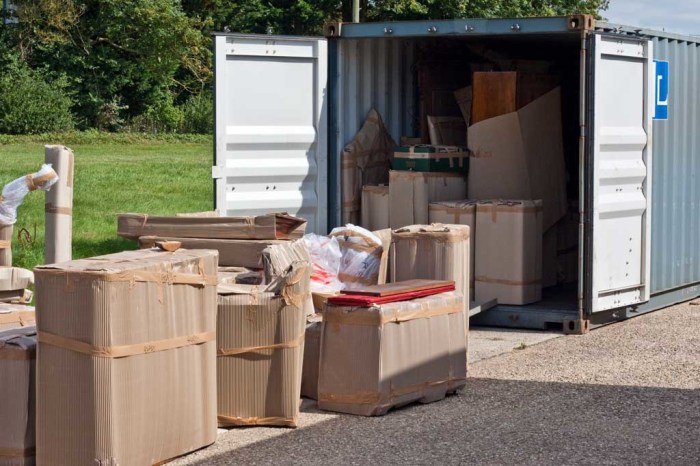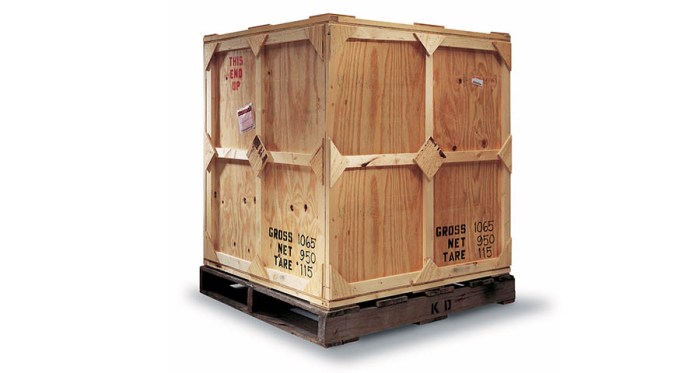Embarking on the realm of furniture shipment, we unveil a world of intricate logistics, specialized handling, and meticulous planning. From grand pianos to delicate antiques, each piece of furniture possesses unique characteristics that demand tailored transportation solutions.
Delving into the nuances of furniture shipment, this comprehensive guide will illuminate the essential factors to consider, the art of proper packaging and loading, the intricacies of customs and documentation, and the advancements in tracking and monitoring systems.
Furniture Shipment Overview
Furniture shipment plays a crucial role in the logistics industry, catering to the transportation of furniture items from manufacturers to retail outlets and end consumers. The furniture industry’s growth and global reach have made furniture shipment a significant segment of the logistics sector.
Types of Furniture and Shipment Requirements
Furniture encompasses a wide range of items with varying sizes, shapes, and materials, each posing specific shipment requirements:
- Upholstered Furniture:Sofas, chairs, and armchairs require careful handling to prevent damage to fabrics and cushioning.
- Wooden Furniture:Tables, desks, and cabinets need protection against scratches, dents, and moisture.
- Metal Furniture:Office furniture, patio sets, and industrial pieces require proper packaging and handling to prevent rust and scratches.
- Glass Furniture:Tables, shelves, and mirrors require specialized packaging and handling to avoid breakage.
- Antique Furniture:Valuable and delicate pieces require meticulous care and handling to preserve their historical and aesthetic integrity.
Planning and Preparation
Effective furniture shipment planning and preparation ensure the safe and timely delivery of your valuable items. Consider these key factors to minimize potential issues:
- Furniture Type and Dimensions:Determine the type, size, and weight of each furniture piece to assess packing and transportation requirements.
- Distance and Transit Time:Consider the distance and estimated transit time to plan for appropriate packaging and protection.
- Climate and Environmental Conditions:Account for temperature, humidity, and potential weather hazards along the shipment route.
- Insurance and Liability:Secure adequate insurance to cover the value of your furniture and protect against potential damages.
Follow this step-by-step guide to prepare your furniture for shipment:
Packing and Protection
- Disassemble Furniture:If possible, disassemble furniture into smaller components to reduce the risk of damage and facilitate packing.
- Wrap Furniture:Use bubble wrap, packing paper, or furniture blankets to protect each piece from scratches and impacts.
- Secure Packing:Use sturdy boxes or crates that are the appropriate size for each furniture piece. Secure items within the containers using packing tape, straps, or cushioning materials.
- Label Boxes:Clearly label each box with its contents and handling instructions, such as “Fragile” or “This Side Up.”
Loading and Transportation
- Proper Loading:Load furniture securely into the moving truck or container, ensuring it is evenly distributed and protected from movement.
- Tie-Downs:Use tie-downs, straps, or ropes to secure furniture in place during transit.
- Monitor Transit:If possible, track the shipment progress to ensure timely delivery and address any potential issues.
Packaging and Loading
Furniture shipment requires careful packaging and loading to protect the items from damage during transit. Proper packaging materials and techniques ensure the furniture arrives at its destination in pristine condition.
When it comes to furniture shipment, it’s essential to find a reliable and reputable provider. Consider Harvertys Furniture , renowned for their exceptional craftsmanship and commitment to customer satisfaction. With their wide selection and personalized service, Harvertys ensures a seamless furniture shipment experience.
Packaging Materials
- Cardboard boxes:Durable and inexpensive, suitable for smaller items and fragile parts.
- Bubble wrap:Provides cushioning and protection from scratches and dents.
- Packing peanuts:Fill voids and prevent movement within the packaging.
- Stretch wrap:Secures and stabilizes furniture pieces, protecting them from moisture.
- Foam sheets:Provide extra padding and support for delicate items.
Loading Techniques
Proper loading is crucial to prevent damage and ensure safe transport. Key principles include:
- Weight distribution:Distribute weight evenly throughout the container to avoid overloading one area.
- Securement:Use straps, ropes, or tie-downs to secure furniture in place, preventing movement during transit.
- Space utilization:Utilize all available space in the container without overcrowding or blocking access to important areas.
- Protection from moisture:Cover furniture with tarps or plastic sheets to protect it from rain or condensation.
- Access to unloading:Consider the unloading process and ensure furniture is accessible for easy removal.
Transportation Methods
When selecting a transportation method for furniture shipment, various factors come into play, including cost, delivery time, reliability, and the nature of the furniture. Each method offers unique advantages and drawbacks.
Furniture shipment can be a daunting task, especially if you’re moving to a new city. Fortunately, there are professional furniture removal services that can make the process much easier. If you’re in San Diego, I highly recommend checking out furniture removal san diego . They offer a wide range of services, from packing and loading to unloading and assembly.
Plus, their rates are very competitive. With their help, you can rest assured that your furniture will arrive at your new home safely and on time.
Road Transport
- Advantages:Flexible routes, door-to-door delivery, cost-effective for short distances, suitable for fragile items.
- Disadvantages:Limited capacity, traffic congestion can delay delivery, weather conditions may affect schedules.
Rail Transport
- Advantages:Large capacity, cost-effective for long distances, less affected by traffic and weather.
- Disadvantages:Limited routes, requires rail access, slower than road transport.
Sea Transport
- Advantages:Most cost-effective for international shipments, suitable for large volumes of furniture.
- Disadvantages:Long transit times, requires port access, can be affected by weather and port congestion.
Air Transport
- Advantages:Fastest delivery method, ideal for urgent shipments, suitable for high-value or fragile furniture.
- Disadvantages:Most expensive method, weight and size restrictions, limited capacity.
Customs and Documentation

When shipping furniture internationally, it is crucial to comply with the customs regulations and documentation requirements of both the origin and destination countries. These regulations vary depending on the countries involved, so it is essential to research and understand the specific requirements for your shipment.
Generally, the following documents are required for international furniture shipments:
Commercial Invoice
- A detailed description of the furniture, including materials, dimensions, and value
- The terms of sale, including the price, payment terms, and shipping costs
- The contact information for both the shipper and the consignee
Packing List
- A detailed list of all items included in the shipment
- The quantity, weight, and dimensions of each item
- The packaging type for each item
Certificate of Origin
- A document that certifies the country of origin of the furniture
- This document may be required for customs clearance in the destination country
Additional Documents, Furniture shipment
Depending on the specific requirements of the countries involved, additional documents may be required, such as:
- Import licenses
- Phytosanitary certificates (for shipments containing wood products)
- Hazardous materials declarations (for shipments containing hazardous materials)
It is important to prepare and submit all necessary paperwork accurately and on time to avoid delays or penalties at customs.
Delivery and Unloading

Upon arrival at the destination, meticulous care must be taken during the delivery and unloading process to ensure the safe and efficient handling of furniture shipments.
Prevention of damage is paramount throughout the delivery process. Furniture pieces should be carefully unloaded from the transportation vehicle and carried to the designated delivery location within the premises.
Damage Prevention
- Inspect the furniture for any visible damage upon arrival.
- Use proper lifting techniques to avoid straining or dropping the furniture.
- Protect delicate surfaces with blankets or padding during handling.
- Avoid dragging or sliding furniture across the floor to prevent scratches.
- Place furniture in its intended location carefully, ensuring stability and avoiding any potential hazards.
Tracking and Monitoring: Furniture Shipment

Effective tracking and monitoring systems are crucial for seamless furniture shipments. These technologies provide real-time visibility into the shipment’s location and status, enabling proactive issue resolution and enhanced supply chain efficiency.
Various technologies are employed for tracking furniture shipments, including:
- GPS Tracking:Global Positioning System (GPS) devices provide precise location data, allowing real-time tracking of the shipment’s movement.
- RFID Tracking:Radio Frequency Identification (RFID) tags can be attached to furniture items, enabling automated tracking and inventory management.
- Sensor-Based Tracking:Sensors can be integrated into furniture items to monitor temperature, humidity, and shock levels, providing insights into the shipment’s condition.
The benefits of real-time visibility and proactive issue resolution include:
- Enhanced Customer Service:Real-time tracking allows for accurate delivery updates, improving customer satisfaction and reducing inquiries.
- Improved Supply Chain Efficiency:Proactive issue resolution enables timely interventions, reducing delays and optimizing resource allocation.
- Reduced Risk and Liability:Tracking and monitoring systems provide evidence of proper handling and storage, mitigating potential disputes and legal liabilities.
Sustainability and Environmental Impact
The furniture shipment industry has a significant environmental impact, primarily due to the use of fossil fuels for transportation, the production of packaging materials, and the disposal of furniture at the end of its lifespan. To mitigate these impacts, sustainable practices and initiatives are emerging in the industry.
One important aspect of sustainable furniture shipment is reducing the carbon footprint of transportation. This can be achieved through the use of more efficient vehicles, such as electric or hybrid trucks, and by optimizing routes to minimize fuel consumption. Additionally, the use of renewable energy sources, such as solar or wind power, can help to reduce the environmental impact of transportation.
Packaging and Materials
The production of packaging materials for furniture shipment can also have a significant environmental impact. To reduce this impact, sustainable packaging materials, such as recycled cardboard or biodegradable plastics, are being used increasingly. Additionally, the use of reusable packaging systems can help to reduce waste and minimize the need for new materials.
Disposal and Recycling
At the end of its lifespan, furniture can be disposed of in a variety of ways, including landfilling, incineration, or recycling. Landfilling and incineration both have negative environmental impacts, so recycling is the preferred option. However, recycling furniture can be challenging due to the variety of materials used in its construction.
To improve recycling rates, furniture manufacturers are increasingly using more recyclable materials and designing furniture that is easier to disassemble.
Furniture shipment can be a complex process, especially when it involves long distances. To ensure a smooth and efficient experience, it’s crucial to consider the best furniture transport options. From specialized carriers to online platforms like furniture transport services, there are numerous solutions tailored to meet your specific shipment needs.
By choosing the right transport method, you can minimize the risk of damage and ensure that your furniture arrives at its destination in pristine condition.
Closing Summary
In the ever-evolving landscape of furniture logistics, sustainability emerges as a guiding principle. By embracing eco-friendly practices and leveraging innovative technologies, the industry strives to minimize its environmental footprint while ensuring the safe and efficient delivery of precious furnishings.
As we conclude our exploration of furniture shipment, we recognize the vital role it plays in connecting manufacturers, retailers, and consumers. With meticulous planning, expert handling, and a commitment to sustainability, we can elevate the art of furniture transportation to new heights.
General Inquiries
What are the key factors to consider when planning furniture shipments?
Factors include the type of furniture, its dimensions and weight, the distance and mode of transportation, and any special handling requirements.
How can I ensure the safe packaging of my furniture during shipment?
Use sturdy boxes, protective wrapping materials, and secure the furniture within the box to prevent movement.
What documentation is required for international furniture shipments?
Typically, a commercial invoice, packing list, and certificate of origin are necessary.